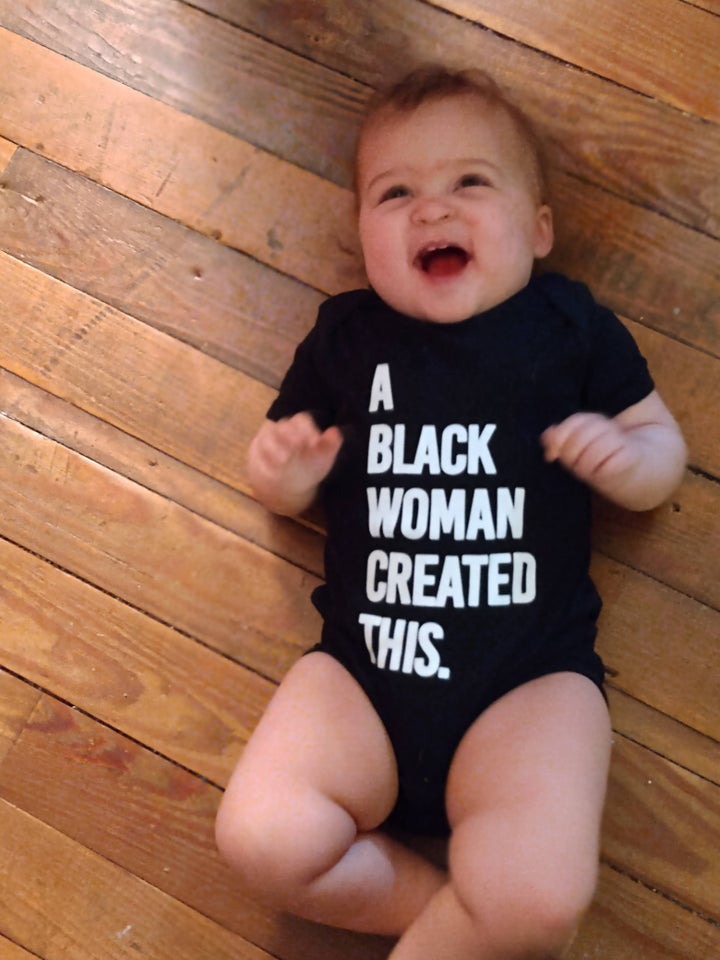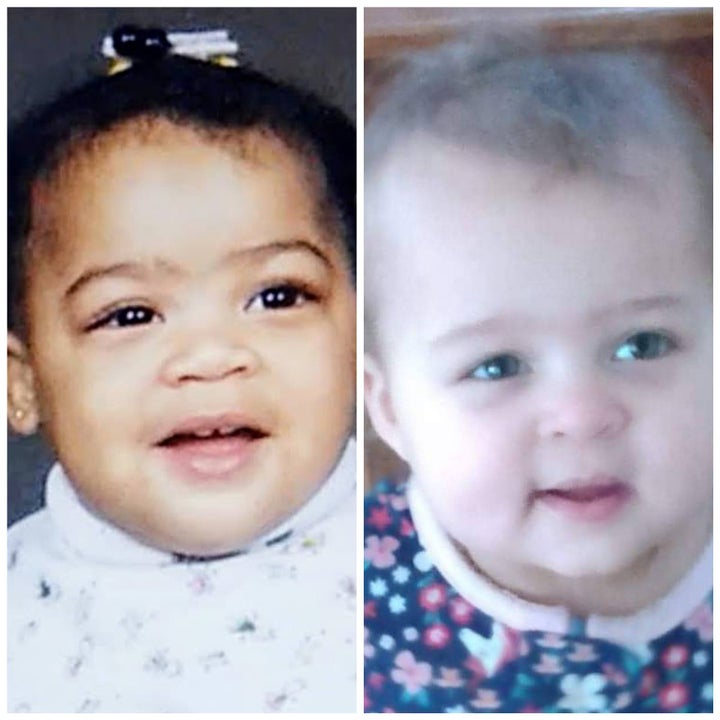My husband is white and I am Black. When we learned we were having a daughter, we quickly set goals for how we would raise her: She should be strong and happy. She would love books and reading. And I wanted her to feel confident in herself ― and her natural hair.
With these goals in mind, I waddled my pregnant self through Barnes and Noble on one of our frequent trips, excited to check out the brightly colored kids’ section. I was overjoyed to see several books on Black hair. Books that would have been useful for me growing up as I often struggled to force a white standard of beauty onto myself. We picked up books filled with Black characters sporting Afro puffs, locs and box braids. As we added these books into our baby’s rapidly growing library, I felt confident that my child wouldn’t struggle with the same issues I did.
In the weeks leading up to baby’s arrival, l followed several mixed-race families on social media, trying to learn how they dealt with raising their families. Sometimes I’d look at pictures of mixed babies and try to envision what my daughter would look like. For all my daydreaming of my child, there was one constant: I knew she would be brown-skinned like me. It would obviously be lighter, but she and I would be brown. Melanin is the stronger gene, or so I thought.
After Luna was born, I told myself she would likely darken with time. Most Black people I knew had some shift in their skin tone as babies. But as the weeks and then months passed, that didn’t happen. The brown-skinned, kinky-haired Luna of my daydreams didn’t exist. Real-life Luna is pale-skinned with gray/hazel eyes and loosely curly blondish-brown hair. (Hair that eventually grew in after what I affectionately call her “Bernie Sanders phase”).
My mom told me if I wanted a Black baby, I should have married a Black man. I married the man I love and who loves me in equal measure. But that didn’t ease my inner turmoil. I looked at Luna and saw my husband. I didn’t see me in my child. I felt othered in my own house, a feeling I had fought my whole life.
Growing up, I struggled to feel comfortable in my own skin. In a family of headstrong, assertive Black women, I wasn’t any of that. I was always quiet and sensitive. Content to hide away with a book or lock away in my bedroom with a Sailor Moon marathon. At times I looked at my Blackness as something I wanted to outrun. I thought if I were anything other than Black, people wouldn’t make fun of me for liking anime or loving rock music. Back then I thought I didn’t fit in because I wasn’t white.
It wasn’t until college when a professor commented that I should embrace my own culture that I was able to open my eyes to a lifetime of consciously and unconsciously equating Blackness with badness. I was “weird,” I was “different,” but I still was, and always would be, Black.

I opened myself to loving my race, loving my identity, loving a massive part of me. I thought I had laid that internal struggle to bed until I gave birth to Luna.
We live in a midsized, liberal dot of a city in the mitten state that’s not Detroit. Interracial relationships are common, but a Black woman with a white man less so. Funny looks and snide comments can be a dime a dozen, but they become something you ignore. I had to talk my husband down the first time we got an insulting comment from a Black man. Together we learned to laugh about it.
That effortless ability to brush off raised eyebrows evaporated after I gave birth. The hyper-awareness of being out with my own child churned anxiety in my chest. Double takes and lingering stares became commonplace. I caught myself saying “Mommy loves you,” with extra emphasis on Mommy. I am Luna’s Mommy, and I wanted random people to know she grew inside of me even if she didn’t look like it.
During my pregnancy, I read articles and first-person accounts of people accusing parents of kidnapping their mixed-race kids. Those stories haunted me. I openly expressed those thoughts to my husband, who did his best to reassure me. When we would go out together, I used his whiteness as a shield. In my mind, he protected us from these things. But he wouldn’t always be there, and I hated that fact.
My mom took Luna and me grocery shopping one day. As we were masking up and getting Luna in the shopping cart, an older white man kept staring at us. I mentioned his gawking to my mom, who at first brushed it off. In the store, as we walked the aisles to find what I needed for my first attempt at white chicken chili, the same white guy kept staring at us. Anytime we were in an aisle near him, he kept an eye on us. My mom wanted to yell at him, but I talked her down. This was our reality, and that fact made my heart ache.

Luna, however, is unfazed by these things. She looks at the world with the bright optimism that only a baby can. My husband and I look at her and see the smartest, funniest, prettiest baby in the whole world. I know that in the future we will have to have conversations about her identity and the color of her skin. We will tackle those issues head on. Telling her she is both Black and white, she can be both, and that is nothing to be ashamed of.
One evening I dug through some old boxes of my stuff looking for something when I came across some of my baby pictures. I almost cried. That little girl is my daughter. There was no mistaking it. Right down to the chubby cheeks and the gap in her teeth.
Excitedly, I shoved the Polaroid at my husband, exclaiming, “That’s Luna!” With a chuckle, he agreed. I picked up Luna and held her close. I saw it. For the first time I saw me in my daughter. Luna’s face is my face.
This article first appeared on HuffPost Personal
